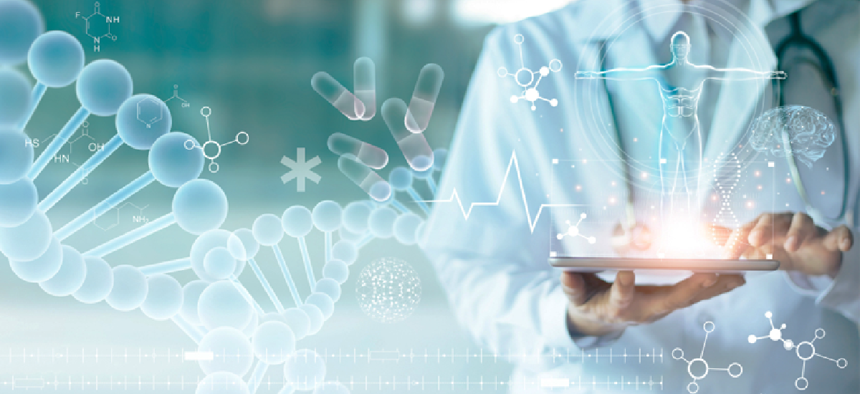Machine learning service streamlines data input for FDA

The machine-learning-as-a-service platform is a collection of cloud-delivered ML solutions, tools and technologies that accelerate the delivery of solutions that help the Food and Drug Administration deliver on its regulatory mission.
To speed and increase the accuracy of data input, the Food and Drug Administration developed a machine-learning-as-a-service (MLaaS) platform.
Machine Learning as a Service Platform
Food and Drug Administration
Click here for all the 2021 Public Sector Innovation winners
The platform is a collection of cloud-delivered ML solutions, tools and technologies that accelerate the delivery of solutions that help FDA deliver on its regulation mission. It includes pre-built models, algorithms and robotic process automation (RPA) that address many FDA use cases using computer vision, image classification and natural language processing (NLP).
The platform came about as a way to address the manual, labor-intensive data input process FDA has used for the large amount of handwritten documents and forms it receives, some of which are in different languages. They arrive in many forms, including PDFs and Microsoft Word and Excel documents, or as pictures from smart devices or scanned images, which may be blurry or at low resolution, and can contain tables and reports.
“One of the challenges that we faced was the amount of time that it takes to get some sort of structured data out of those forms and then really do something with that data in terms of our public health mission,” FDA’s acting CTO Sohail Chaudhry said
The platform is an iterative solution that can automatically recognize a form and its type, identify the handwritten content and then digitize it. What’s more, it can translate foreign languages into English, extract key information and apply it to a downstream application.
The MLaaS solution is application-agnostic, meaning end users don’t have to have a specific program or solution to use it. “It’s built on a microservice architecture. The platform uses a serverless container, so it’s extremely lightweight; you don’t even need a server to start using it,” Chaudhry added.
Rather than have various FDA components develop and use their own ML and AI tools, they can tap into the MLaaS engine that has been matured over time, which not only provides standardization, but controls costs.
The MLaaS also has a scoring function that indicates how confident the platform is about its correctness. “There’s an impact based on the decisions made off of it, so we not only have the machine give us these predictive analyses, but we also have a confidence score that we allocate,” Chaudhry said. “When a human looks at it, they can tell that it’s done by a machine, not a human.”
Work on the MLaaS platform, which is hosted in FDA’s cloud, began about a year ago. To use it, employees select what they want from the Office of Information Management and Technology’s service catalog, and it gets published to the user through an application programming interface.
“The fact that it’s offered in our pre-authorized cloud, the solution itself is low in cost, [and] it increases our deployment flexibility because most of our next-gen services and applications are being deployed in the cloud,” Chaudhry said.
One lesson learned from the effort is the importance of making changes as they arise. For instance, if an algorithm interprets a physician’s handwritten “COVID” as “could,” an adjustment is necessary. “As we are finding out things that are not right, we rectify it, and once we rectify it in one area, it has a downstream effect and fixes itself all across,” Chaudhry said.
MLaaS is part of a larger effort at FDA to find standardized, enhanced ways of implementing purpose-built technologies – “not just doing technological changes for the sake of doing a change, but bringing AI, ML, RPA and NLP into our ecosystem with a desire to make it purpose-fit,” he said.
The next iteration of MLaaS involves plugging in FDA’s existing low- to no-code workflow automation tools. After that, Chaudhry said he will turn his attention to blockchain-as-a-service.
With any as-a-service tool, the goal is to make it generic enough to be used for many use cases regardless of the office that wants to use it.
“The concept of X as a service really gets operationalized in an agency like FDA because the need is not limited to one specific business office or center,” he said. “The benefits of using these capabilities and solutions, they just go off the spectrum.”
NEXT STORY: DOD smooths funding path for entrepreneurs





